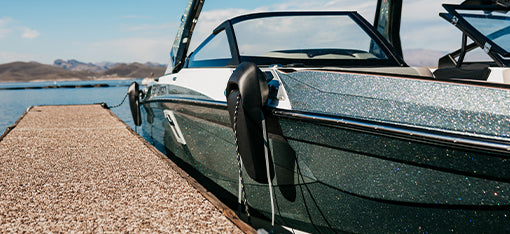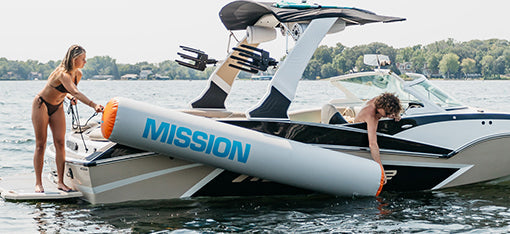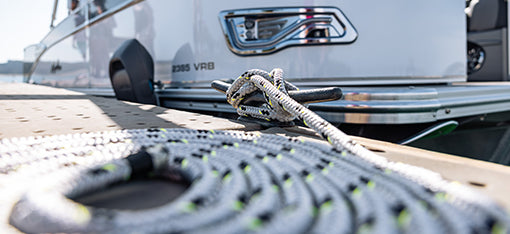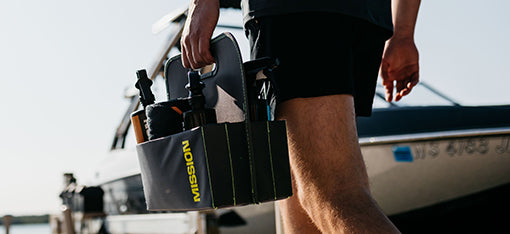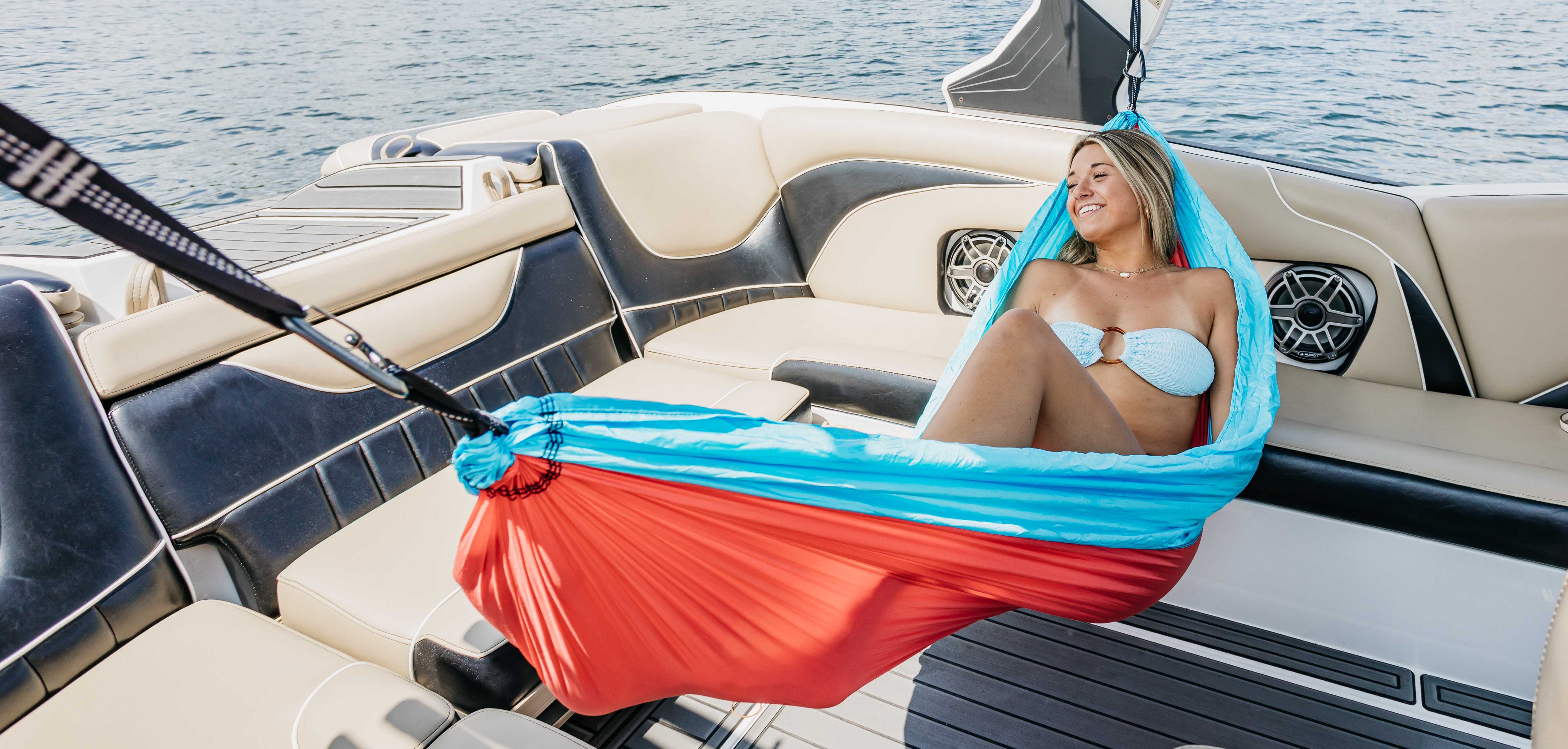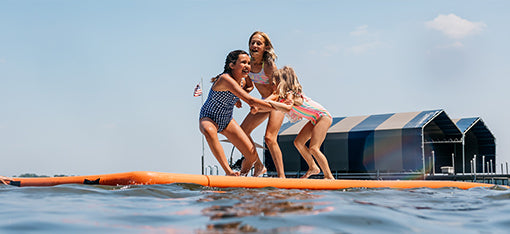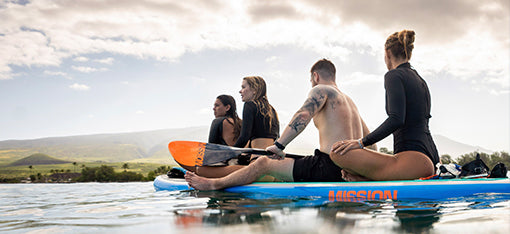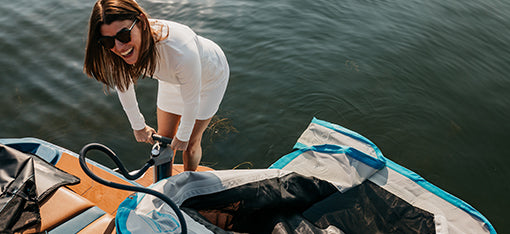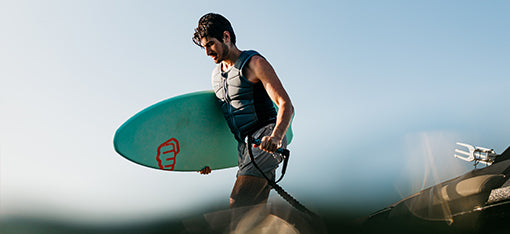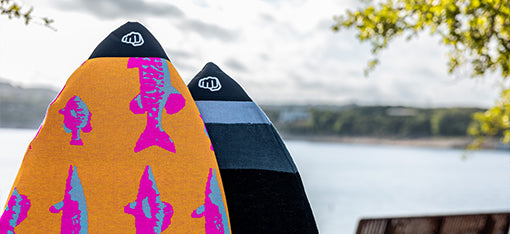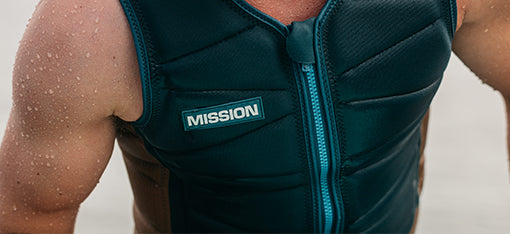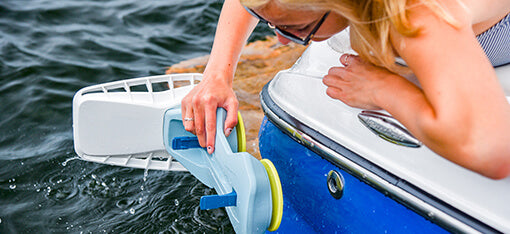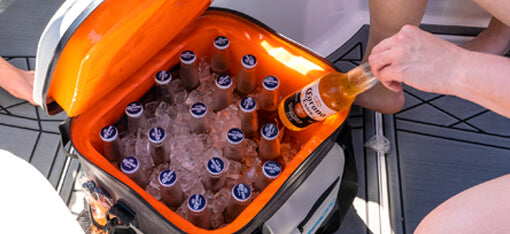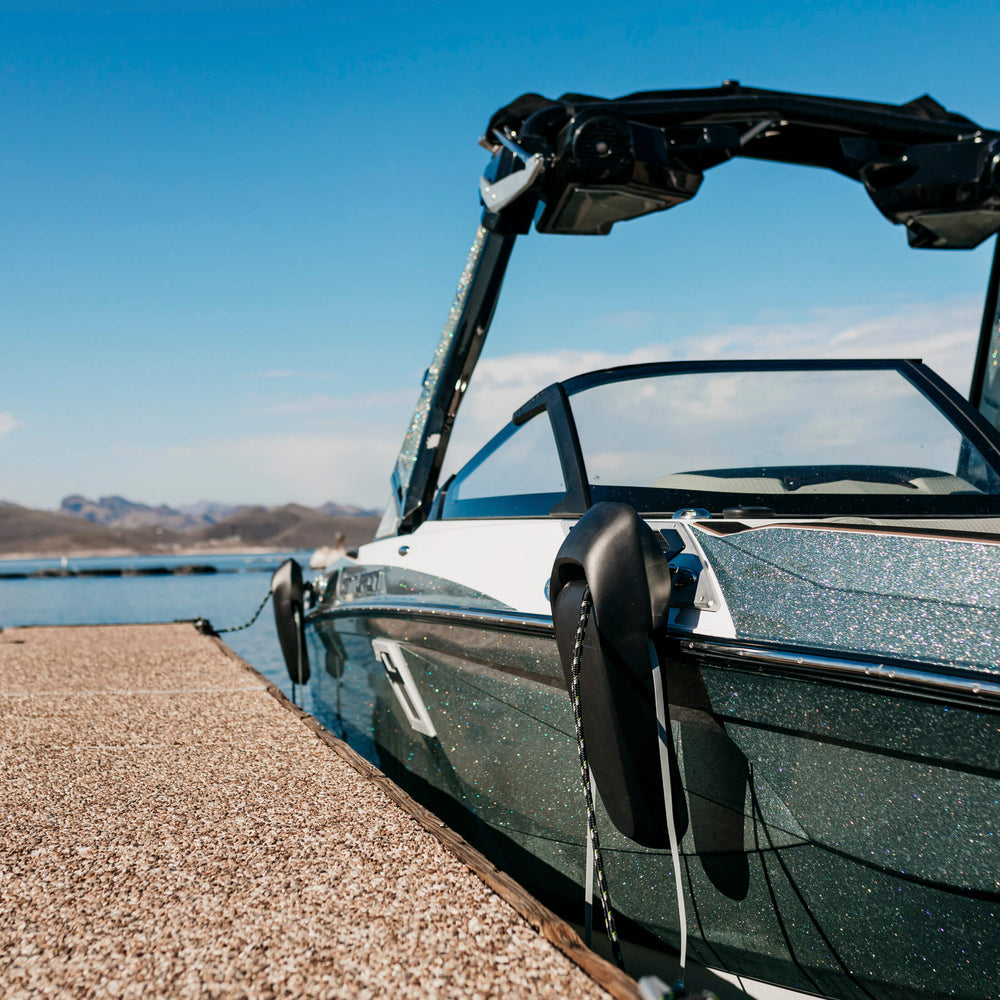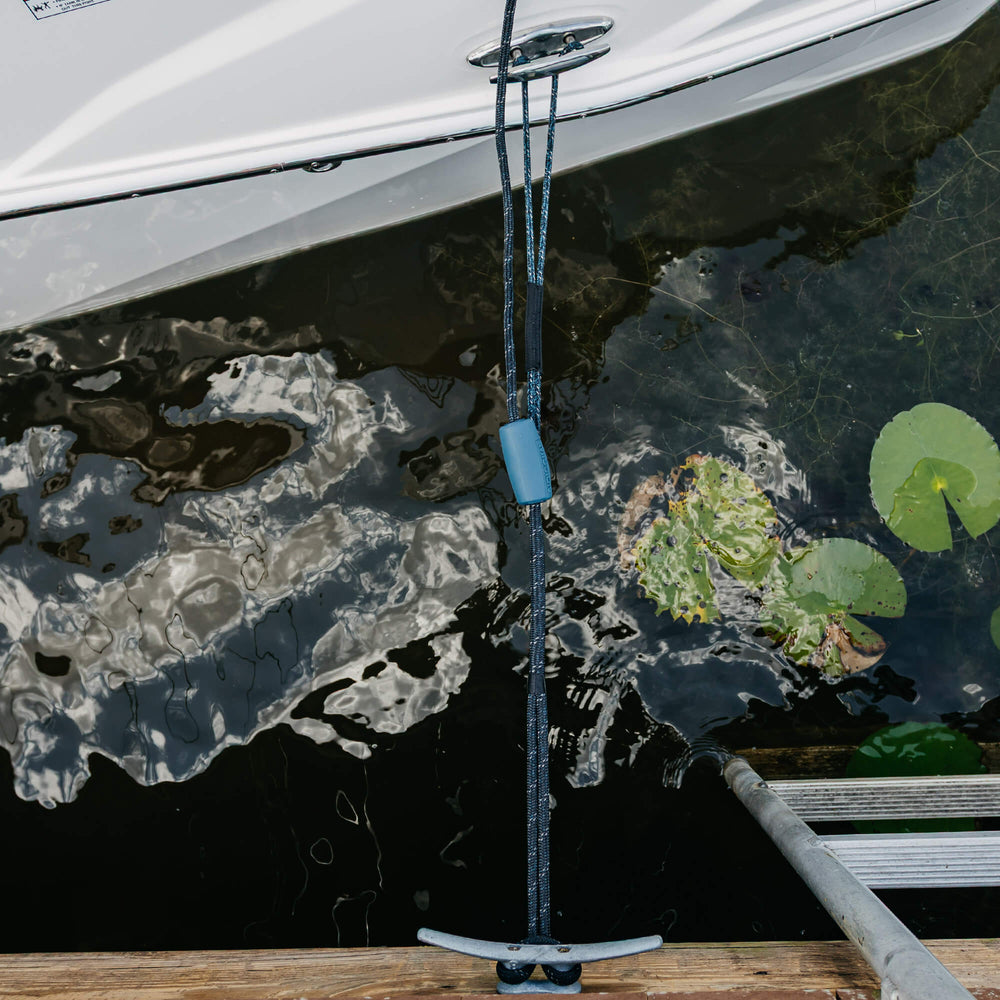Teaching Someone How To Wakesurf | Step-by-Step
There’s an old saying: “those who can’t do, teach.” Well, sometimes the opposite is true. You might be a seasoned wakesurfer who simply learned by doing but shouting “just stand up” from the boat isn’t helping your friends and family discover the thrill of wakesurfing.
That’s why we’re here. With an understanding of the basics, we’ll help you help them learn how to get out of the water and start carving up some tasty wakes.
First things first: SAFETY
Everyone’s surfing style will be a little different but there are two universal rules to wakesurfing:
- Only surf behind an inboard boat. Surfing behind an outboard boat is extremely dangerous because the surfer is too close to the exposed prop.
- Always wear a U.S. Coast Guard-approved life vest. Accidents happen. Be smart.
What’s the best wakesurf board for beginners?
Bigger isn’t better, and sticking a new surfer on the thickest board you can find won’t help them get up. The best wakesurf boards for beginners are thin, light, and have enough surface area to push against the water and lift the surfer out – like our new CHARLIE board.
Step 1: Starting position
Put the surfer in a position that will allow them to face the wake once they’re up and surfing. This will help them see the wake, where they’re positioned in it, and understand how it impacts their speed and movement.
Step 2: Foot and body positioning
To help the surfer figure out which foot to put forward (regular or goofy stance), tell them to imagine someone pushing them from behind. Which foot would they use to keep from falling on their face? That’s the foot they should put closest to the nose of the board.
Once in the water, have them place their heels on top of the board and “sit” behind it with their knees bent and pulled in toward their chest. Tell them to keep their arms extended and outside of their legs so it’s easier for them to turn once they’re ready to stand up.
Step 3: Getting out of the water
Tell them to fight the urge to pull themselves up. Instead, as the boat begins to pull forward, have them lean back while pushing their feet into the board and turning their hip toward the nose of the board. The boat will do the hard work of lifting them out of the water*. All they have to do is balance themselves.
*Reminder for drivers: You don’t need to slam down the throttle like you would for a waterskier. Just accelerate slow and steady to around 10.5MPH.
Step 4: Surfing the wake
Once they’re up, tell them to keep hold of the tow rope and while they get comfortable on the board. If they need to adjust their footing, make sure they do it with small movements so they don’t lose their balance.
Tell them to keep their feet directly over the centerline of the board. If their heels or toes get too close to the rails, they’ll be constantly fighting to keep the board tracking in a straight line. Now, they can explore the “pocket,” learning where the boundaries are and how the wave behaves at the front compared to the back. The best way to do this is to explain how their front foot acts like a gas pedal and their rear foot acts as a brake.
Once they’re comfortable, they can “drop the rope” by tossing it to the other side of the wake for someone in the boat to pull in.
Those are the basics of teaching someone how to wakesurf. Now, your friends and family can get in on the action. Just make sure you’re doing your part by learning How to Drive Your Boat for Wakesurfing.


